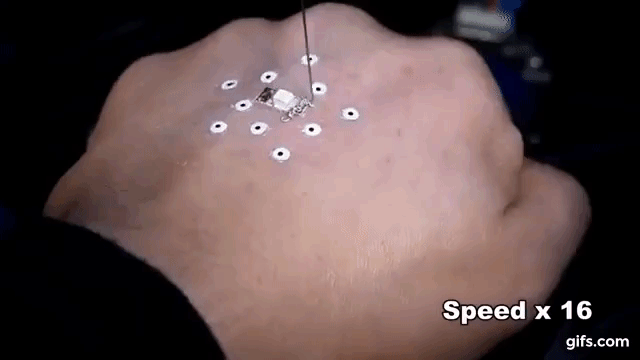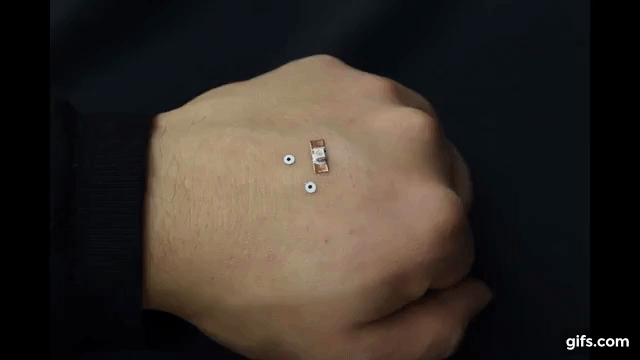Scientists at the University of Minnesota (UMN) have 3D printed an electronic circuit on to the back of a human hand for the first time. Though temporary, like lick n stick tattoos, this technology presents great potential for helping to heal wounds, gather advanced intelligence on the battlefield, and promote response in remote locations.
“It would be like a ‘Swiss Army knife’ of the future with everything they need all in one portable 3D printing tool,” explains Michael McAlpine, lead author of a study on the process, and UMN associate professor.
“We imagine that a soldier could pull this printer out of a backpack and print a chemical sensor or other electronics they need, directly on the skin.”

Fabricating a sixth sense
In the wider literature, UMN’s sensor is one of many 3D printed “tattoos” tipped to give a sixth sense to their wearers. Massachusetts Institute of Technology (MIT) researchers have developed their own electronic, 3D printed tattoo, activated by bacteria.
For wound healing, the Wake Forest Institute for Regenerative Medicine (WFIRM) is leading a U.S. Army initiative to 3D print skin.
The advantages of UMN’s research is that is seeks to provide a platform that combines both electronics and cell culture 3D printing in an affordable, lightweight, and portable package. The 3D printer they use for the process costs less than $400 to purchase, and is based on FDM/FFF technology.
Complete with computer vision
UMN’s 3D printer is also rendered capable of computer vision. Before the electrical or cell-laden ink is deposited, small markers are placed onto the skin.

The markers are then scanned, providing the 3D printer software with an image of, say, the back of a hand.
When a hand is held still to be 3D printed on, the 3D printer automatically accounts for any micro movements that occur, to achieve even deposition of the material.
Silver ink used for electronics printing cures at room temperature to create sensor on the back of person’s hand. Afterwards, the temporary “tattoo” can simply be removed either by peeling away, or washing with water.
“I’m fascinated by the idea of printing electronics or cells directly on the skin,” adds McAlpine, “It is such a simple idea and has unlimited potential for important applications in the future.”
A paper discussing this technology, titled “3D Printed Functional and Biological Materials on Moving Freeform Surfaces“, is published online in Advanced Materials journal. It is co-authored by Zhijie Zhu, Shuang‐Zhuang Guo, Tessa Hirdler, Cindy Eide, Xiaoxiao Fan, Jakub Tolar and Michael C. McAlpine.
For more of the latest cutting-edge 3D printing research sign up to the 3D Printing Industry newsletter, follow us on Twitter, and like us on Facebook.
Search and post 3D Printing Jobs for opportunities and new talent.
Vote for research team of the year and more in the 2018 3D Printing Industry Awards.
Featured image shows a UMN 3D printed electronic sensor. Photo via McAlpine group, University of Minnesota



